It’s the second day of AAT Kings’ Tassie’s East Coast Highlights tour, a five-day guided coach tour from Launceston to Hobart, and we’re on our way to Bridestowe Lavender Estate, the largest lavender farm in the southern hemisphere.
I’ll be honest: before yesterday, exploring Lutruwita/Tasmania on a guided coach tour wasn’t on my radar. I know they’re popular but I’d never tried it. But one day on AAT Kings’ luxury coach and I’ve come around to the idea.
Coach touring takes away the stress of travel, allowing you to sit back and enjoy the scenery while someone else deals with the logistics. It’s a great way to make friends and learn new things. (Our guide, Carolyn Tipper – a seventh-generation Tasmanian – has encyclopaedic knowledge about all things Tassie.) And the itinerary? Whether you’re drawn to natural scenery and wildlife encounters, historical sites and towns, First Nations cultural experiences or sampling local food and wine, this trip has it covered.
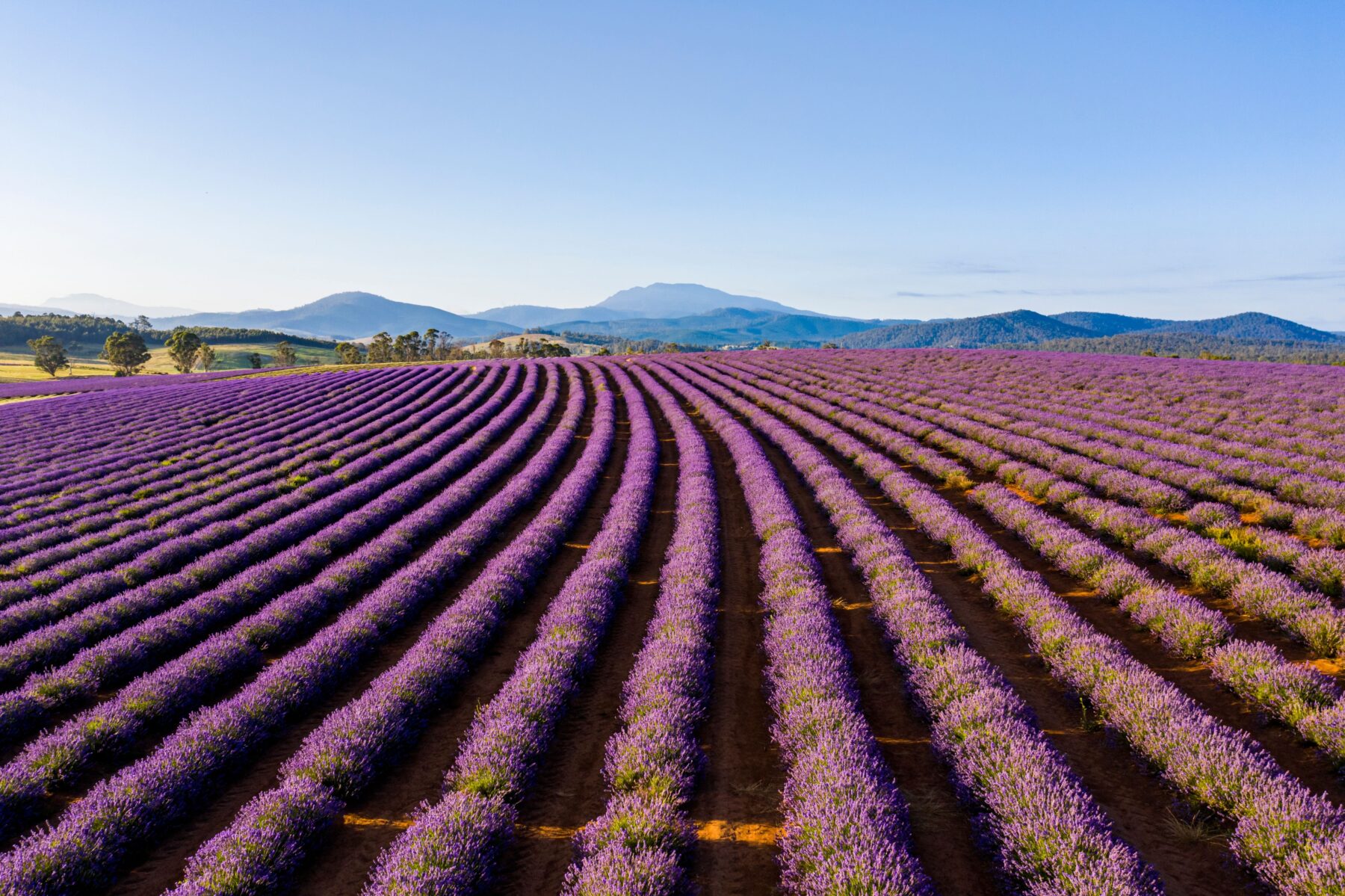
Yesterday we were treated to lunch at the Tasmanian Gourmet Sauce Company at a historic homestead on the outskirts of Evandale, a National Trust-classified Georgian village. Returning to Launceston, we rode the chairlift to Cataract Gorge, followed by a six-course dinner at Peppers Silo Hotel (guests dine at own expense on the first night) – small wonder that Launceston became a UNESCO City of Gastronomy in 2021.
Today, we’ve ventured about 50km northeast of Launceston to Bridestowe Lavender Estate. From each December to January, this 50ha farm transforms into a carpet of purple, attracting up to 1500 visitors a day. It’s arguably one of Tasmania’s most recognisable attractions – although some might object to that label.
“It’s a working farm … [not] a farm that’s just growing a pretty flower that looks lovely in the rows,” explains Kim Weston, Bridestowe’s tourism manager. “The flowering starts around late November, in about two or three weeks, and if you have a close look at some of the plants, you can see the buds just starting to happen. As soon as the farm goes into flower, we get busy doing the harvesting.”
We’ve gathered in a distillery for a fragrance workshop. Kim explains that Bridestowe’s lavender oil is extracted through steam distillation, with about 200kg of lavender yielding two litres of oil in 45 minutes. Most of this oil will be exported to Europe, Japan and America for perfume, cosmetic and aromatherapy uses. The lavender that isn’t used for oil is dried and used to make culinary products and sachets for heat packs or sold to other companies. After the fragrance workshop, we’re treated to a scoop of lavender ice cream and tea.
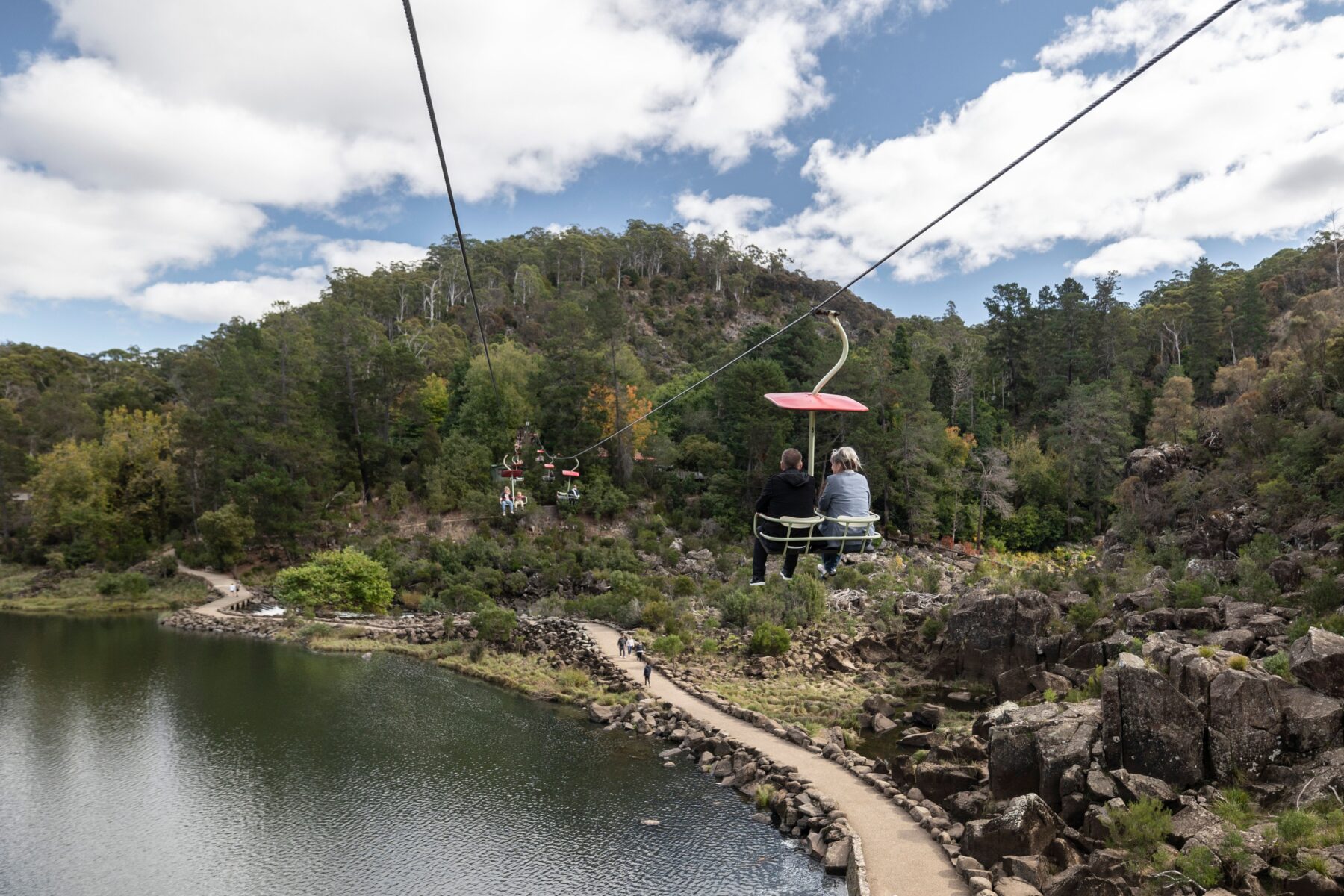
Tassie devils up close
That afternoon, we travel to East Coast Natureworld in Bicheno to meet some Tassie devils. After the feeding, we meet four joeys. Two are about six months old and squirming with energy. The other two, about a month younger, doze inside a blanket.
Like many sanctuaries, Natureworld plays an important role in educating the public about devil facial tumour disease (DFTD). “Researchers and scientists can’t be out here talking to people, so we’re that bridge between the scientific community and the general public,” says Natureworld’s wildlife manager, Natalie Hill.
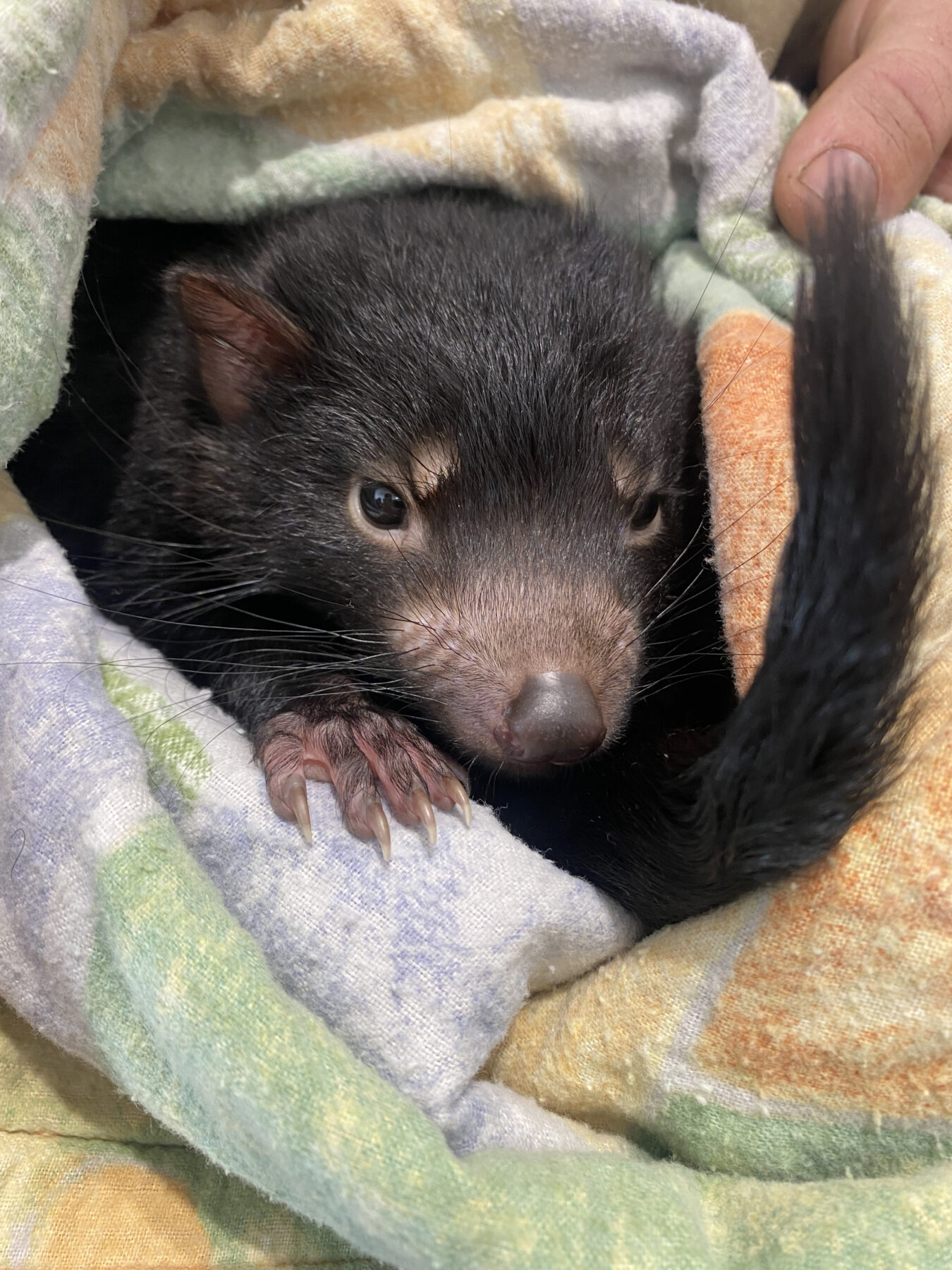
Image credit: Esme Mathis
DFTD was first documented by scientists in 1996 and has since wiped out an estimated 90 per cent of Tasmania’s wild devil population. Spread through biting, DFTD – one of the only known transmissible parasitic cancers in the world – causes large tumours on the face and neck that eventually kill a devil by preventing it from eating.
But it’s not all doom and gloom. Natalie says experts are now refining an oral vaccine that can provide a devil with about six months’ immunity against DFTD. It’s far from a silver-bullet solution, but it’s certainly a step in the right direction. Distributing this vaccine is a major challenge, but scientists are experimenting with AI facial recognition technology to deliver doses to devils in the wild.
Back on the coach, we learn AAT Kings has donated close to $40,000 to the Save the Tasmanian Devil Appeal. The tour operator has partnered with the TreadRight Foundation to ensure its tours have positive impacts on the people, communities and wildlife, modelled off the United Nations Sustainable Development goals. “Every person that buys one of our trips actually contributes … [to] a carbon fund,” says Ben Hall, AAT Kings’ CEO. This carbon fund supports sustainable projects, from funding GreenWave’s regenerative kelp farms, contributing to a reforestation project in Far North Queensland’s Daintree Rainforest, and, of course, aiding efforts to save Tassie devils.
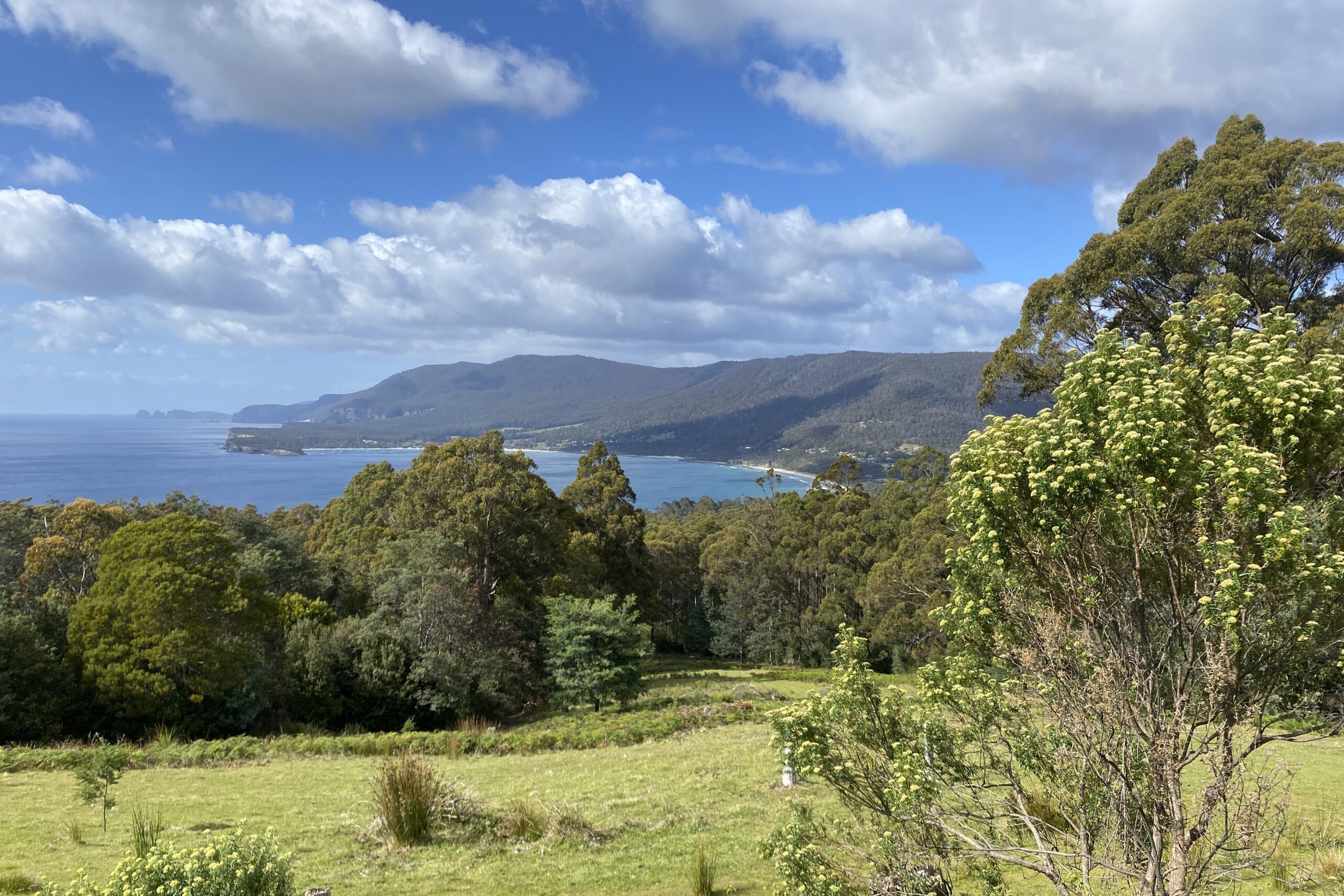
Stories of the Palawa people
Our coach is unusually quiet as it rolls into Hobart the following afternoon, as many on board take a much-needed nap. We’d woken up early that morning to explore Freycinet National Park and take on the 3km-return trail to Wineglass Bay Lookout, followed by a stroll around Coles Bay Conservation Area. Our next stop was Richmond, a beautifully preserved Georgian village with sandstone cottages, oak trees and rose gardens seemingly transplanted from the English countryside.
We’re about to hear about the history and customs of the Palawa people on a bush tucker tour at Rosny Park. Trawlwoolway woman Trish Hodge, of Nita Education, greets us in a possum fur cloak and welcomes us to Country. She’s carrying a bowl made from dried kelp packed with local bush tucker.
We sample saltbush, sea purslane and she-oak, then follow Trish to a ground-creeping succulent with bright pink flowers called pigface. “When these little bulbs go bright red and soft, you can pick them and eat them. They are like a sickly sweet, salty strawberry – and they are the most amazing fruit on the planet,” Trish says. “The leaves are also very similar to aloe vera. Add that juice to any sort of burn, like sunburn or fire burn, to rashes, eczema, acne, stretch marks, all sorts of skin conditions, and after a few days of applying it, it will fix everything.”
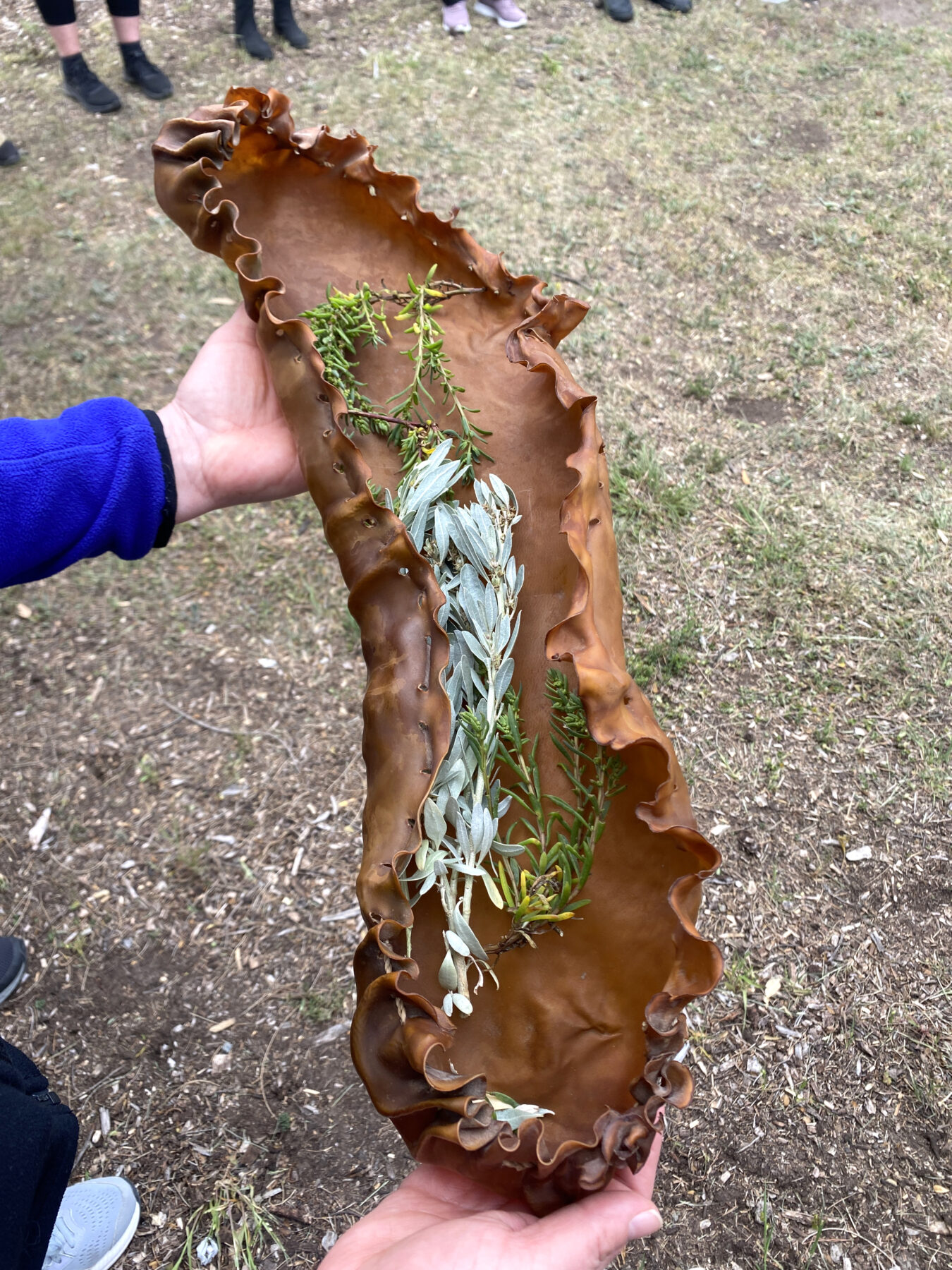
Trish’s knowledge of Country comes from a lifetime of being connected to her heritage. It wasn’t always easy; when she was in school, a teacher told Trish she couldn’t possibly be Aboriginal Tasmanian. “Up until 1995 in Tasmania, the government and historians said that Truganini was the last Tasmanian,” Trish says. “She was only teaching what she’d been taught. Later on, that teacher – Mrs Hughes – was doing her family tree, and she rang mum because she found out she was Aboriginal.”
Trish says stories like these are becoming more common in Tasmania, as people research their family histories. “There are a lot of Aboriginal people that didn’t know their history growing up,” she says. “I was very fortunate.”
Trish is descended from a warrior and seer called Mannalargenna. “Mannalargenna was the chief of the North East nation, and he had four daughters,” Trish says. “The four daughters were taken by British and American sealers, and it’s through the four daughters of Mannalargenna that most Tasmanian Aboriginal people come from today, [along with] a couple of other women from the North East.”
Trish is descended through Mannalargenna’s daughter Woretemoeteryenner.
She founded Nita Education with her brother to help inform the public about the Palawa people, combat lingering misinformation about their history, and prove their culture is very much alive.
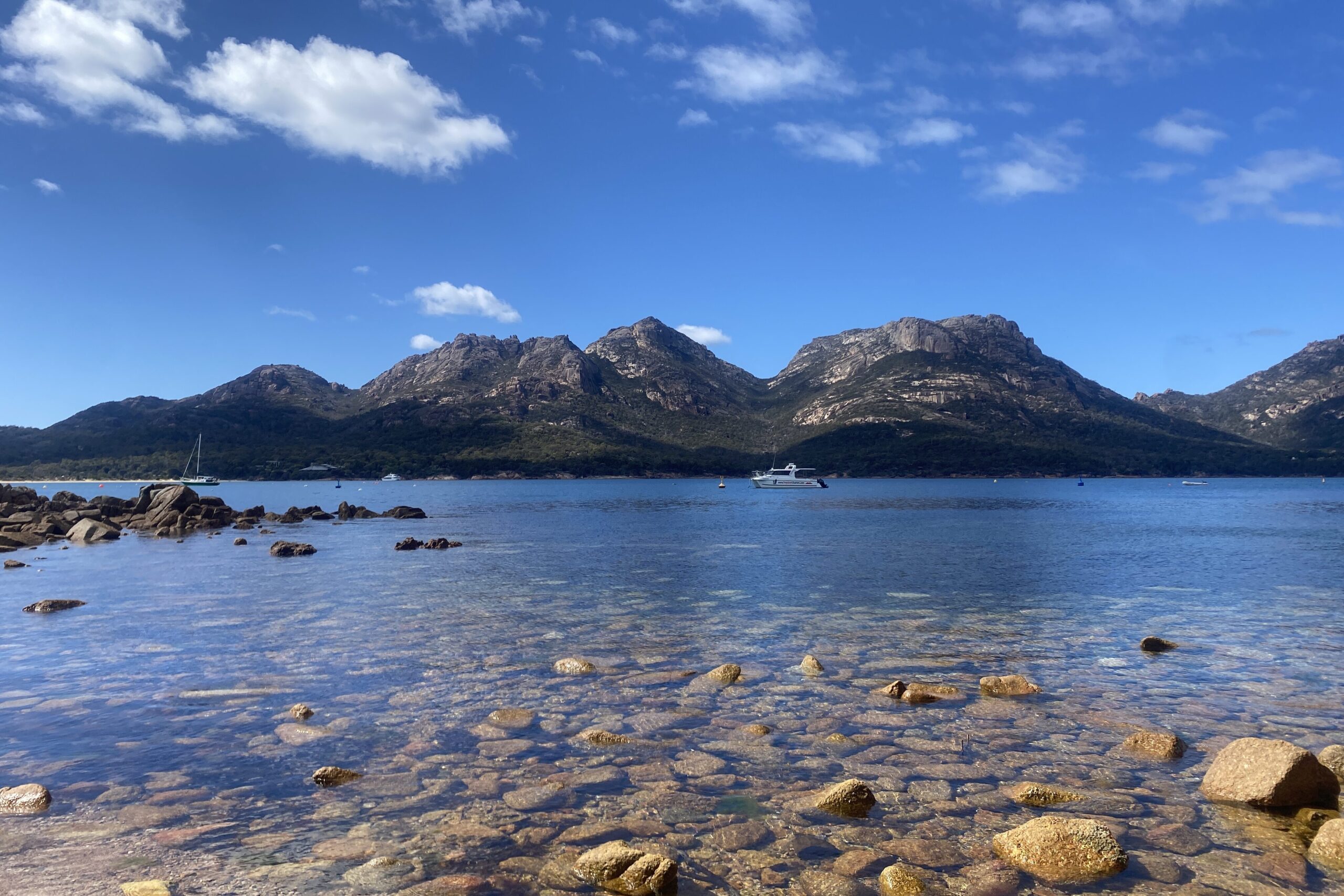
Convict history
Our Tassie East Coast adventure is drawing to a close, but there’s enough time for a Derwent River cruise with Pennicott Wilderness Journeys and a trip to Australia’s most-famous convict site: Port Arthur. The UNESCO World Heritage-listed site welcomes about 300,000 visitors a year to explore the 32 buildings and ruins. Guide Colin Knight leads us around several sites, bringing history to life with both tragic and colourful stories.
During his lifetime, Colin has witnessed shifting attitudes towards Australia’s convict history. Having convict ancestry is no longer a shameful, taboo topic, but worn as a badge of pride.
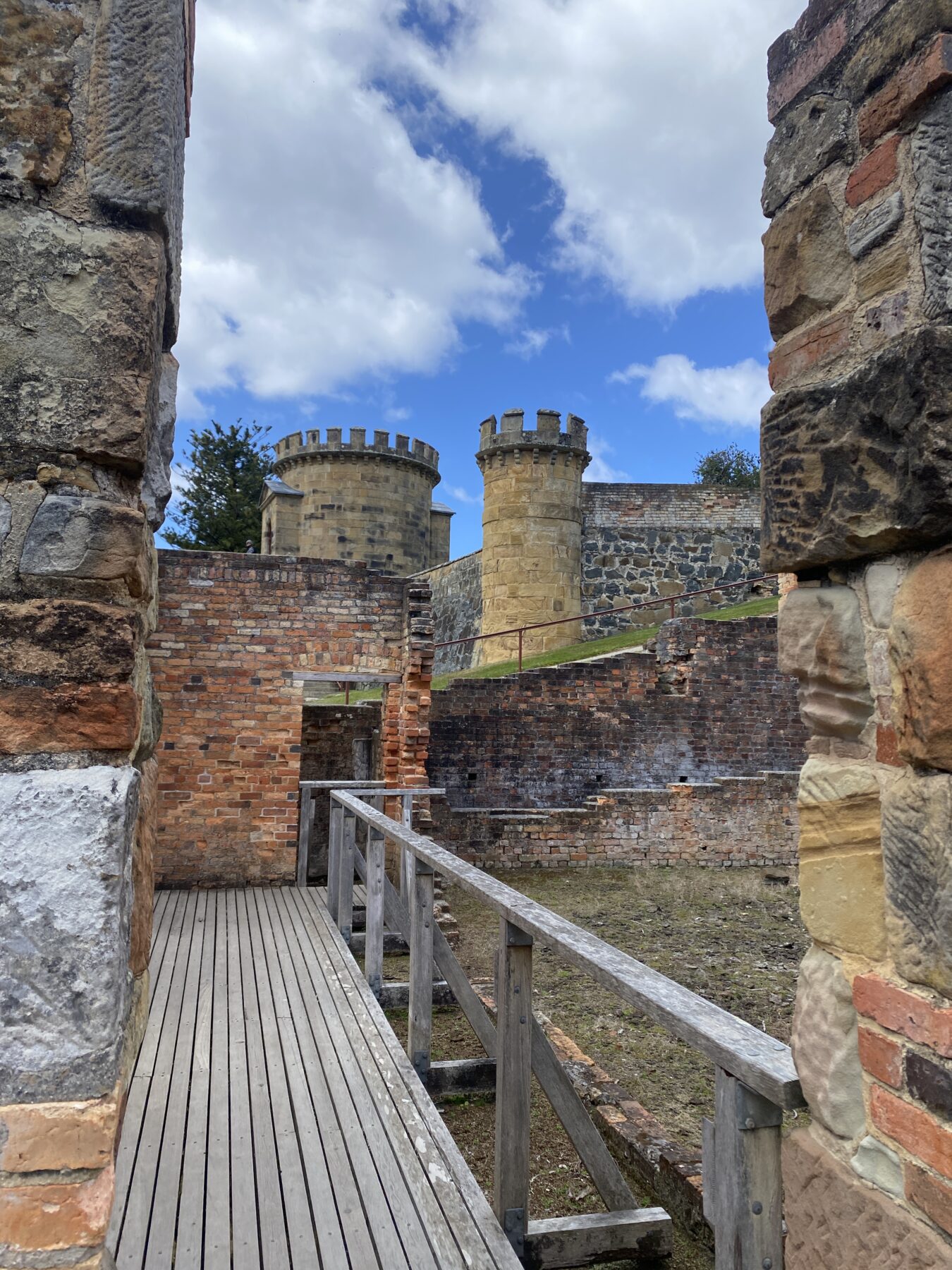
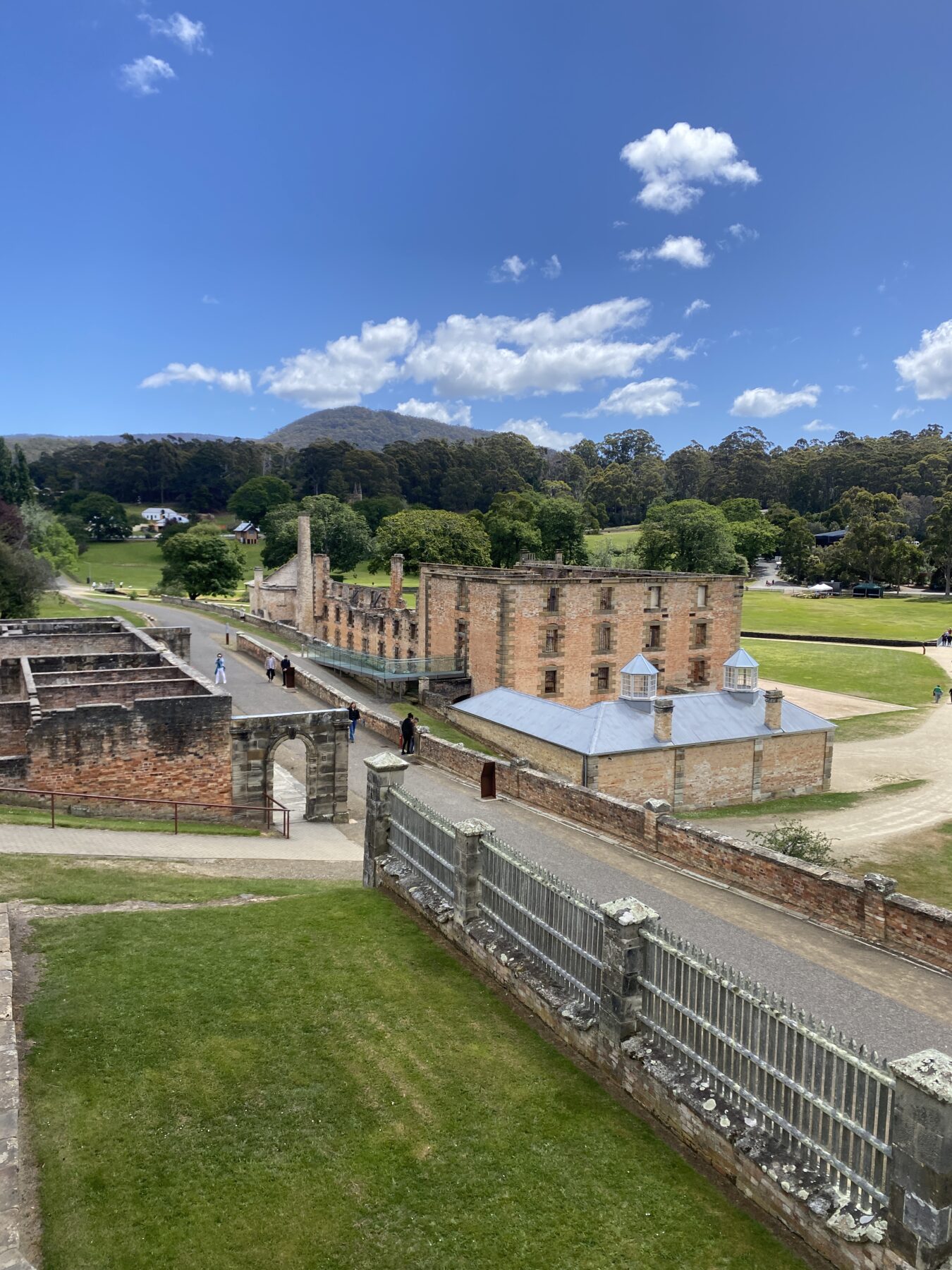
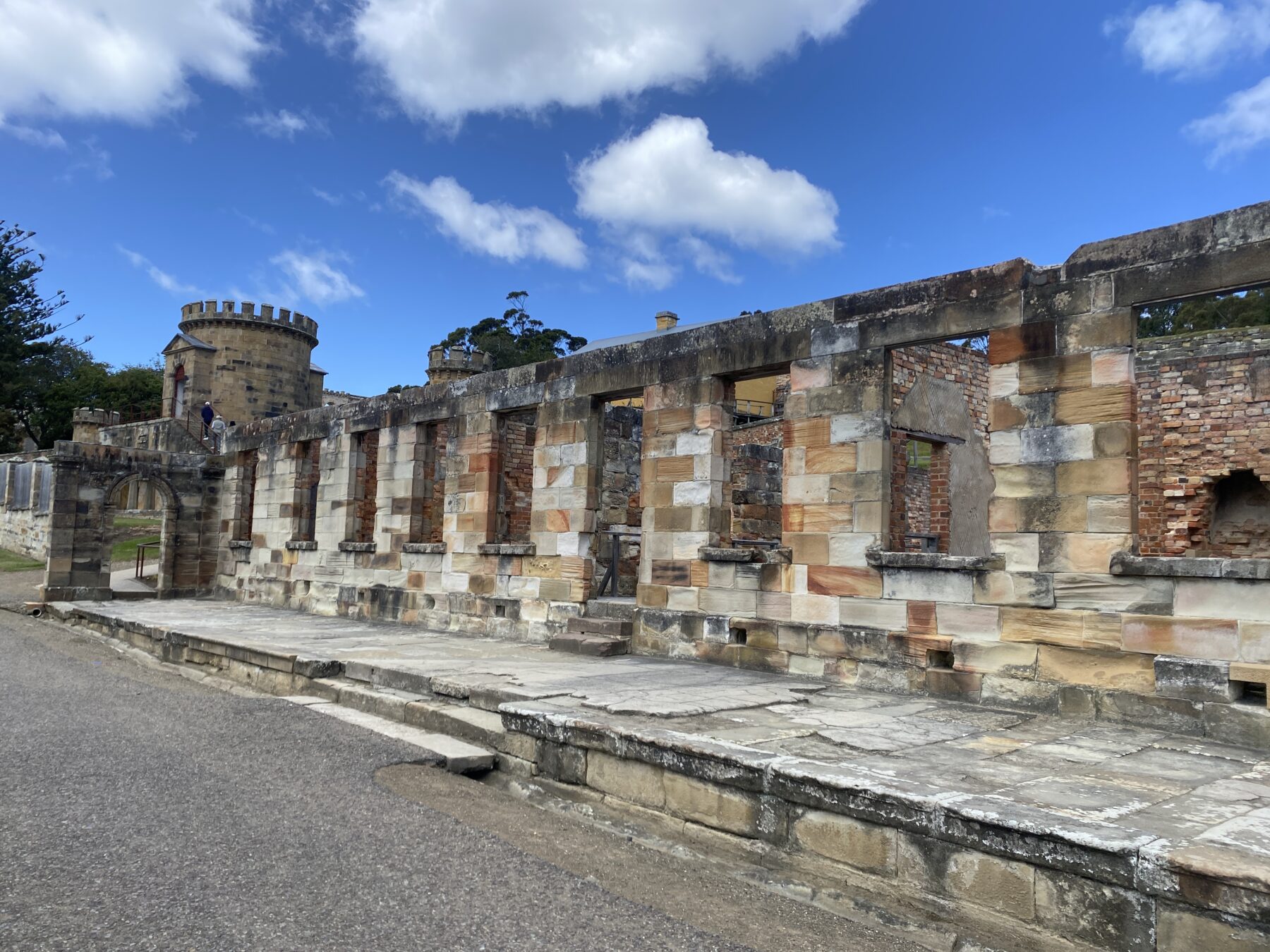
“Past generations liked to sweep it under the carpet and disregard it all together,” Colin says. “Granny wouldn’t mention it. People changed their names, changed the spelling of names. Convict records, sadly, were destroyed. These days, people actively look for a convict in their past, whereas not so long ago they were actively trying to hide them. And my experience is, if that [convict] is really bad, they like it even better.”
Tasmania’s convict sites are now a major drawcard for tourists, from both mainland Australia and overseas. It’s among the many reasons why the Apple Isle is now regarded as one of Australia’s top travel destinations.
Esme Mathis travelled courtesy of AAT Kings.



